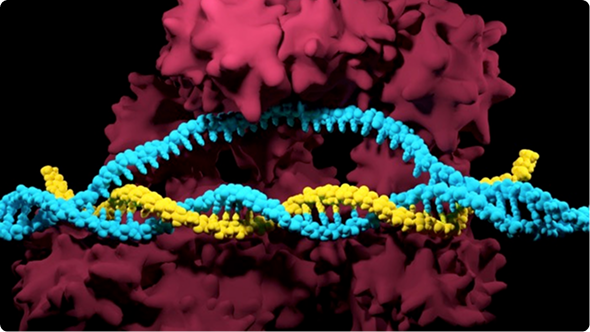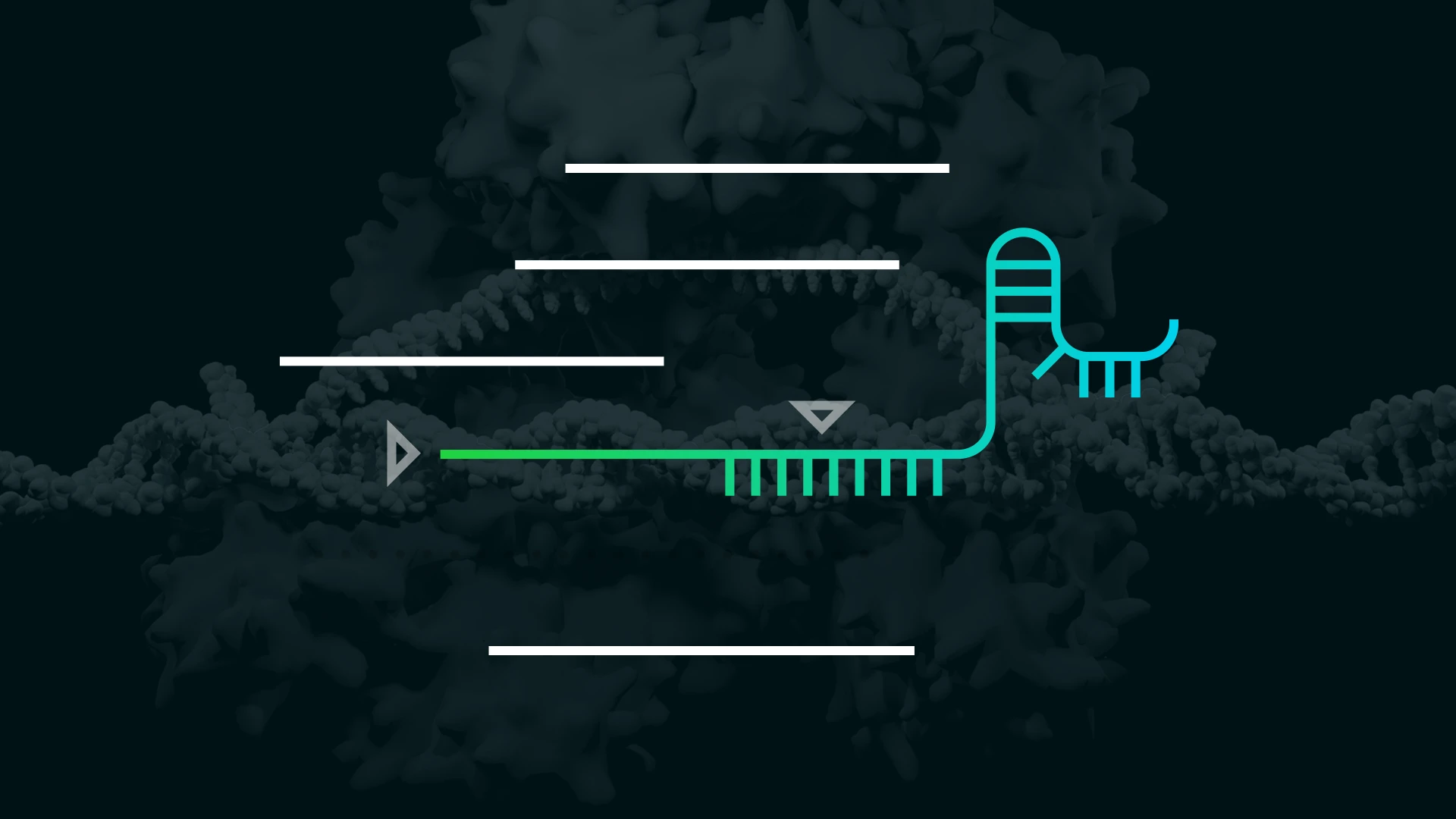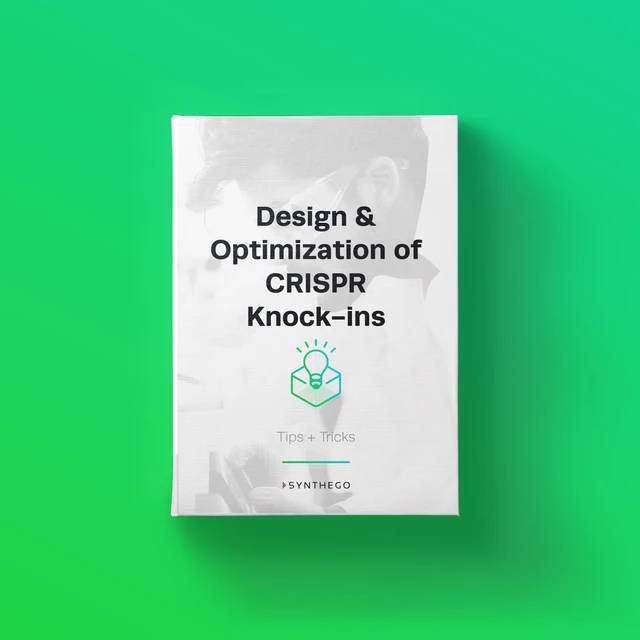How to Design CRISPR Guide RNAs For Different Experiments
CRISPR is far more versatile than just a tool to knock out your gene of interest. It can be used to edit DNA at precise locations or even to finely tune gene expression. An important point to remember while embarking on a CRISPR experiment is that a universal “perfect gRNA” does not exist. This is because the parameters to be considered while designing guide RNA for a knockout experiment do not necessarily overlap with those for a knock-in experiment, for instance.
How the end goal largely drives gRNA design is elaborated in the section below.
Designing gRNA for Gene Knockouts
Perhaps the most widely adopted use of CRISPR is to knock out (KO) specific genes in the genome of an organism to test their function. A successful genetic knockout generally results in a loss of protein function and often (but not always) manifests as a change in phenotype.
The most common way to generate CRISPR-mediates knockouts is through the non-homologous end joining (NHEJ) repair pathway. In this mechanism, the Cas nuclease is directed to the correct genomic locus by the guide RNA and creates a double-strand break (DSB). The DSB is fixed by NHEJ, which is a “quick fix” repair pathway. This pathway often results in insertion or deletion (indel) of one or more nucleotides at the point of cleavage, which leads to frameshift mutations that completely knock out gene function.
The entire basis of a CRISPR gene knockout experiment relies on indels being introduced by NHEJ during repair. However, an indel does not guarantee the disruption of protein function, especially if the cut site is not carefully planned.
When designing the guide RNA for a knockout experiment, it is important to select target sites in exons that are crucial for protein function. For this reason, targeting regions encoding amino acids too close to the N- or C-terminus of the protein should be avoided. In the case of the former, the cell could possibly find another start codon (ATG) downstream, while in the latter case, the target sites could code for non-essential part of the protein.
The above parameters for a knockout experiment are important, but they still offer a wide range of genomic locations for designing the gRNA. Therefore, for these experiments, researchers can select the gRNA with highest sequence complementarity within the specified location range.
Designing Guides for CRISPR Knock-ins
A knock-in (KI) experiment aims to edit the target genome by inserting a new DNA fragment into the genome. In this case, researchers aim to divert the cell from using its “quick and dirty” NHEJ repair pathway to another more sophisticated repair pathway, referred to as the homology-directed repair (HDR) pathway. In HDR, the cell copies the sequence of a donor DNA template to fill in the broken piece accurately. In knock-in experiments, researchers supply a surplus of template DNA bearing their desired genomic change, improving their chances that the cell will pick this DNA to use for the repair.
As KI experiments require additional elements such as external DNA for HDR, there is less freedom in the target site location for designing a guide RNA. Studies have shown a dramatic drop in efficiency of knock-in experiment when the cut site was not close to ends of the repair template. This restricts the potential gRNAs that can be designed around this limited location. These locational constraints are even more stringent for the Cas9 nucleases that edit bases without cutting the DNA. Thus, for gene editing, location, rather than sequence complementarity, is the limiting design parameter.
Designing Guide RNAs for CRISPRa & CRISPRi
The critical parameters for gRNA design are also different for CRISPRa and CRISPRi experiments. These experiments involve gene activation or inhibition by targeting the promoter of the target gene. The location target DNA range for guide RNA is therefore quite narrow, necessitating a balance of complementary sequence and optimized location while designing.
Design and Optimization of CRISPR Knock-in Experiments
Interested in doing CRISPR knock-ins but are not sure where to start? Here are some recommendations and advice on how to design guide RNA and a DNA donor template for homology-directed repair. We also provide information on how to optimize a knock-in experiment to get the best results.
Download
Tips & Tricks eBook
Ensure On-Target Activity of Guide RNA
Logically, it seems obvious that an optimum guide RNA should be specific for only the target DNA sequence and not anywhere else in the genome (i.e. sequence complementarity and target location proximity are important parameters driving the design criteria). But from the above sections, it is clear that the decision regarding whether to compromise on complementarity or location will be determined by the goals of each experiment.
How is one supposed to analyze all experimental conditions and risk making a critical error in picking the CRISPR guide? The bad news is that, indeed, the answer is not intuitive. The good news is that there is strength in numbers. In 2016, Doench et al. analyzed the specificity of thousands of guide RNAs while creating genome-wide mice and human libraries. Using sophisticated computational biology tools, the team established scoring rules to predict the on-target activity of gRNAs, and the “Doench rules” are now implemented in several online gRNA design tools.
Minimize gRNA Off-Target Effects
The Doench study also yielded another useful metric: the off-target activity score. This score of a designed gRNA indicates how likely it is that the gRNA will bind non-intended targets.
Off-target activity is one of the most crucial reasons for CRISPR-fear being hyped by mass media. Therefore any help in minimizing that is of utmost importance for a successful CRISPR experiment, especially if it will be performed in vivo.
Improve CRISPR Knockouts by Using Multiple gRNAs
While a lot of focus is generally on design parameters, there are other ways to maximize on-target efficiency and minimize off-target effects. Multiple gRNAs targeting the same gene has also been shown to improve editing efficiency and greatly increase the chance of generating a knockout.
Choose the Best CRISPR Design Tool
All this might be overwhelming. Luckily, there are online guide RNA design tools available that take into account all the above parameters.
Synthego CRISPR Design Tool
This is the world’s most efficient CRISPR design tool for gene knockouts. The Synthego CRISPR Design Tool enables guide RNA design for over 120,000 genomes and 9,000 species, while also reducing guide design time from hours down to minutes. The tool automatically recommends the guide(s) that have the highest chances of gene knockout and the lowest off-target effects. The tool also offers the ability to validate guide designs created by other methods, including the tools listed above, and has an integrated process for easily ordering the top scoring synthetic sgRNAs.
Within 5 minutes, you can easily design a CRISPR guide for gene knockout. Whether you’re a new CRISPR user or an advanced researcher, the Synthego CRISPR Design Tool generates great knockout designs for all.
Benchling CRISPR Design Tool
Benchling’s CRISPR design tool is a great resource to design knock-in experiments because it allows researchers to design guide RNAs and templates in one place, quickly and securely.
Some other CRISPR tools suffer from outdated scoring algorithms, slow speed, and privacy and security issues. Benchling works with scientists to implement the latest in CRISPR advances, resulting in a product powered by the latest scoring algorithms with speeds 100X faster than the leading competitor.
Conclusion
When designing guide RNAs for CRISPR experiments, it’s important to always start by considering the experimental goal. To quote Yogi Berra, “If you don’t know where you are going, you might wind up someplace else.”
Once you do know the goal of your CRISPR experiments, make sure to consider the on-target and off-target potential of your guide RNAs, and use the best CRISPR design tool for your experimental method.



